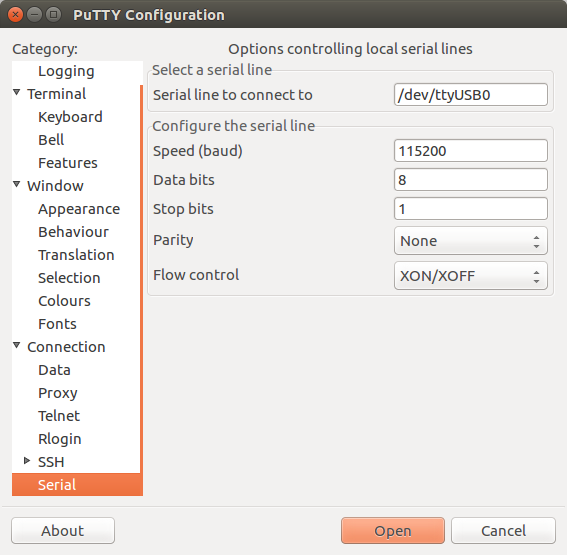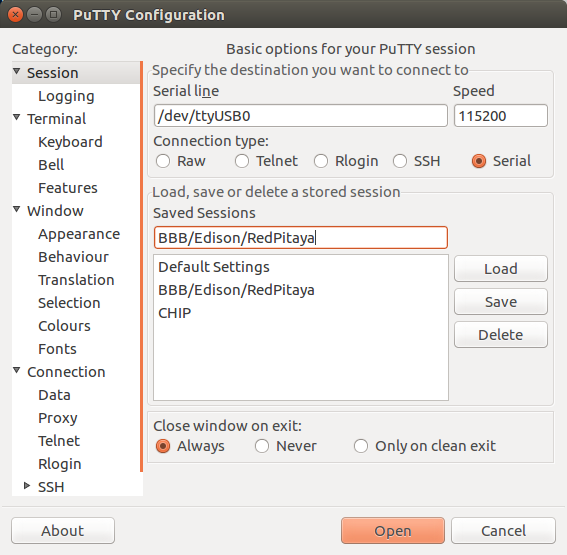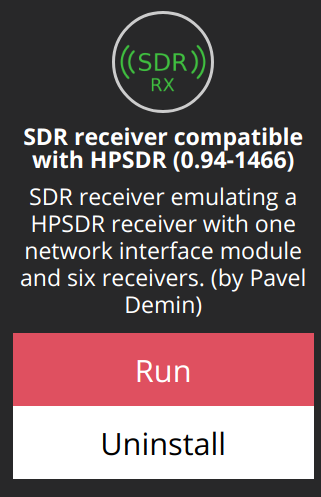AIDA tools
For those interested in:
- working with data from ASK/ALIS
- seeing how auroral 3D tomography works
Björn Gustavsson Matlab toolbox AIDA-tools has been updated on Github.
For those interested in:
Björn Gustavsson Matlab toolbox AIDA-tools has been updated on Github.
Using the standard Python install (no extra packages), find SSH or other types of servers by Python script.
It uses Python sockets to:
Alternative: find servers with unknown IP address but known ports open is by using Nmap.
This problem was fixed by Nvidia driver ≥ 384
Ubuntu with Nvidia driver version 375 may experience rainbow banding effects where shadows are cast.
Workaround A:
setsid compiz --replaceThis does not require sudo.
Workaround B: I got tired of having to keep doing the workaround above, so I temporarily reverted back to Nvidia driver 340. Alternatively, Nouveau also works OK.
“Free” “unlimited” data storage, even for scientists doing multi-generational data archiving, has its bounds, else tragedy of the commons would result. For Zenodo as of this writing, with a full-gigabit Internet connection, I get Zenodo upload speeds in the 5-20 Mbyte/second range, averaging about 12 Mbyte/second.
That means for the current 50 Gbyte per dataset limit, a 50 Gbyte upload will take me about 1 to 3 hours. Thus it’s useful to use good archival file compression before uploading to Zenodo or elsewhere.
LZIP is a top choice for reliable, robust long-term archiving of data. With any compression algorithm, the defaults are often not the best choice for very large datasets as encountered in radio science or geoscience in general.
Lzip for large datasets: LZIP options we’ve used for large datasets (here with file extension .bin).
Create a file MANIFEST with a list of files to archive. You can do this manually or with a find command, like:
find . *.bin > MANIFESTCreate a checksum of the files
sha256sum $(< MANIFEST) > SHA256SUMZip up the files into filename.tar.lz
tar cvf - $(< MANIFEST) | plzip -0 > filename.tar.lzLzip single large file: create my.bin.lz.
plzip -k -0 my.big-klzip delete the original fileLZIP options: plzip is the multithreaded version of lzip that uses all the virtual cores of your CPU, to go at least N times faster when N is the number of physical CPU cores.
This compresses the files down to 30-50 % of their original size while being as fast as possible. See the benchmark observations for that greatly increased CPU time doesn’t help compress much more.
tar -I didn’t work for lzip: sometimes the -I 'lzip -0' option of tar doesn’t have any effect–it uses the -9 option of lzip regardless..
LZIP benchmarks: for a 106.9 MByte 16-bit software defined radio dataset (a short test file) I found the table below. It’s immediately evident that for large, high-entropy (noisy natural geoscience data) that very low compression settings are appropriate. Similar results for LZMA compression options for large datasets of geoscience auroral video.
It may be possible to tweak further improvements by using dictionary size and match length options, if someone has an extremely large noisy dataset compression problem (e.g. CERN).
| Lzip - | Compression ratio | time (seconds) |
|---|---|---|
| 0 | 0.471 | 5.6 |
| 1 | 0.448 | 18.7 |
| 2 | 0.447 | 30.8 |
| 6 | 0.407 | 95.2 |
| 9 | 0.400 | 116.2 |
Compression of very noisy datasets: why is there often little advantage in noisy geoscience datasets for high compression settings? At the most basic level, lossless compression is about finding redundancies in the files. Self-similarities, autocorrelation, and the like. Nature is an incredibly powerful random number generator–the opposite of what compression algorithms need. In contrast to the high-SNR image and text data used by most of the populace, scientists, and geoscientists in particular have instruments that use a very large dynamic range with high sensitivity. For the radio science and scientific camera domains, this typically means 16-bit high speed ADCs where most of the time, several bits are uniformly zero, and the rest of the bits are highly random, with a slowly changing bias value.
In practical terms, a trivial lossless compression algorithm eliminates those high bits that are so often zero, but even a very advanced lossless algorithm will have trouble getting further compression benefit vs. CPU cycles on typical remote sensing datasets.
This process to install GNU Radio on the Raspberry Pi assumes:
Install GNU Radio. This takes more than 10 minutes even with a fast SD card.
apt install gnuradio gnuradio-dev xvfb gitxvfbFor Red Pitaya with Raspberry Pi GNU Radio, also install
apt install gr-hpsdrConfigure the Red Pitaya for six HPSDR receivers
If needed,
rename
Ethernet interface to eth0
wpa_supplicant reference
Prereqs:
Quick Start:
Download Red Pitaya OS zip. Login if needed.
Before and after inserting the micro SD card into the laptop, type
lsblkThe new drive is the SD card. Be sure you have the right one because the next command erases the drive! lets assume it’s /dev/mmcblk0
Extract .img.zip to SD card by
unzip -p red_pitaya*.img.zip | sudo dd of=/dev/mmcblk0 bs=4Mthis will take several minutes without progress indicator e.g. 4000/10/60 = 6.6 minutes.
Type sync to be sure SD card is done writing.
Insert microSD card into Red Pitaya (contacts facing away from PCB)
Power up Red Pitaya with Micro USB jack nearest board edge.
The flashing LED settle down in 30 seconds to constant green and blue and double-flashing red (or, single flashing orange).
Accessing the Red Pitaya via web browser shows the graphical apps for oscilloscope, spectrum analyzer, and the App Store for free apps like SDR, VNA, etc. You can also connect to the Red Pitaya via SSH or serial port console.
Connecting to Red Pitaya over Ethernet: the Red Pitaya uses Avahi so that you typically don’t have to search for its IP addresses.
The Avahi address is found as follows.
Use the last 6 characters of the MAC address on the Red Pitaya Ethernet jack (say 12:34:56), and on laptop web browser http://rp-123456.local.
If you have trouble, try nmap to find the IP address of the Red Pitaya.
SSH login/password: root/root
Serial port: if you can’t connect over Ethernet to Red Pitaya, you can plug a standard micro-USB cable from your PC to the Red Pitaya micro USB port next to the Ethernet jack. Find the serial port the Red Pitaya is on via
ls /dev/ttyUSB*Probably it’s on /dev/ttyUSB0.
Then use
PuTTY
to connect to the Red Pitaya with the commonly used settings in these figures below:


For Pavel Demin’s ecosystem*.zip images for Red Pitaya ham radio, just extract the .zip file to the blank FAT32 formatted SD card.
The ecosystem*.zip contains numerous files and directories, unlike the single .img file in the procedure above.
Setup Red Pitaya HPSDR receiver image: format a micro SD card to FAT32.
Find the SD card device name from df – be sure you don’t overwrite your hard drive!
lsblkSuppose the SD card is at /dev/mmcblk0:
umount /dev/mmcblk0
mkdosfs -F 32 -n HPSDR6rx /dev/mmcblk0Download the latest .img.zip Red Pitaya beta Ubuntu image and then extract to the SD card:
mount /dev/mmcblk0 /mnt/HPSDR6rx
unzip -p redpitaya_ubuntu*.img.zip | sudo dd of=/dev/mmcblk0 bs=4M
syncBoot the Red Pitaya with this SD card. Connect to Red Pitaya via Ethernet using SSH using Avahi.
ssh root@redpitaya.localor via serial port
Via the web browser Red Pitaya control panel, install Pavel’s six receiver HPSDR app.
On the
Red Pitaya add the following to rc.local to auto-start the HPSDR server
# Start the SDR Receiver compatible with HPSDR at boot time
cat /opt/redpitaya/www/apps/sdr_receiver_hpsdr/sdr_receiver_hpsdr.bit >/dev/xdevcfg
source /opt/redpitaya/www/apps/sdr_receiver_hpsdr/start.shreboot the Red Pitaya


On the Red Pitaya (or via serial/SSH)
ps aux | grep hpsdrYou should see
/opt/redpitaya/www/apps/sdr_receiver_hpsdr/sdr-receiver-hpsdr 1 1 1 1 1 1
Where all the 1’s mean that each receiver is using RX1 SMA connector.
You can configure each of the receivers to use RX1 or RX2.
There are several HPSDR compatible programs such as GNU Radio Companion HPSDR client:
apt install gnuradio gr-hpsdrIf the Ubuntu repository gr-hpsdr is out of date, be sure the default gr-hpsdr works for you, then consider the current Github:
git clone https://github.com/Tom-McDermott/gr-hpsdrfor the Cmake command, you may need to tell which directory gnuradio-runtime.pc is in to avoid
GnuRadio Runtime required to compile hpsdr
PKG_CONFIG_PATH=/usr/lib/x86_64-linux-gnu/pkgconfig cmake -B buildPrereqs you’ll need include
libboost-all-dev
libgsl-dev
libczmq-devMake a block diagram with GNU Radio Companion, using the hermesNB or hermesWB blocks.
If it doesn’t work, try
make uninstallnote that the version 1.2 of gr-hpsdr didn’t seem to update the connection between Gnu Radio Companion and the modules yet.
Use the top_block.py directly in Python e.g.
python top_block.pyIt seems that GNU Radio ≥ 3.7.10 is needed as 3.7.9 just hangs waiting for connection.
If building GNU Radio, be sure to remove the system-installed gnuradio first.
apt remove gnuradioIf you get error
ImportError: libgnuradio-runtime-3.7.10.so.0.0.0: cannot open shared object file: No such file or directory
Ensure that /usr/local/lib is in LD_LIBRARY_PATH by in your ~/.profile adding the line
export LD_LIBRARY_PATH=$LD_LIBRARY_PATH:/usr/local/libWindows only: OpenHPSDR PowerSDR mRX PS
Related: Red Pitaya GNURadio image setup
Normally we copy files over the network using encrypted SSH underneath SCP, SFTP or Rsync. In the case of low power ARM CPUs, this may take an excessively long time since the low power CPU is overtaxed with encryption. This method below is highly insecure, only for files you don’t mind sending unencrypted over isolated LAN only (don’t use this on any Internet-connected network!). However it copies files over 10-100 times faster than SSH-based methods with low power ARM CPUs.
Note: You must have the port open in the firewall of the receiving PC.
On file-receiving PC, pick an open port in your firewall e.g. 60123, here we assume the receiving PC IP is 192.168.1.10
nc -l 60123 | tar xvOn Raspberry Pi, let’s say you want to recursively copy ~/myfiles to the receiving PC over the LAN
tar cfv - ~/myfiles | nc 192.168.1.10 60123On both devices, you see a list of filenames as they’re copied. Don’t forget to close the firewall port if you opened on on the receiving PC.
The Semtech SX-1280 $3 three dollar ranging chip was evaluated for LoRa ranging. In general, 200 kHz RF bandwidth, 0.5 kbps data bandwidth and -130 dBm sensitivity trade lower speed for maximum range. The narrow RF channel bandwidth helps range and reliability in the highly-congested 2.4 GHz band.
The Semtech SX-1280 2.4 GHz long-range radio transceiver in ranging mode may use 0.4, 0.8, or 1.6 MHz, relying on a subordinate unit to act as a sort of bent-pipe to relay the signal back with fixed device delay. Without using more advanced techniques to constrain the problem, by
ΔR = c⁄2B
We would expect at best 3e8 / (2*1.6e6) = 94 meters range resolution. Assuming a sensor fusion application, this ranging would not replace GPS in and of itself, but would indeed provide an excellent supplement for dense urban areas, such as large malls, warehouse/factory, and parking garages. LTE location accuracy can do significantly better than this due to the typical 5-10 MHz or more bandwidth readily yielding sub-100 m location accuracy. One of the key well-known limits of such low RF-bandwidth wireless location systems as demonstrated by SciVision, Inc. via model and simulation to US Dept. of Transportation personnel is multipath.
Multipath refers to the cancellations and self-interference causes from slightly time-delayed, strong reflections reaching the receiver. Multipath is often worst in dense urban areas, likewise hindering accuracy of GPS.
CONOPS:
Only the LoRa controller gets the ranging result (which is communicated to the node).
Notes: